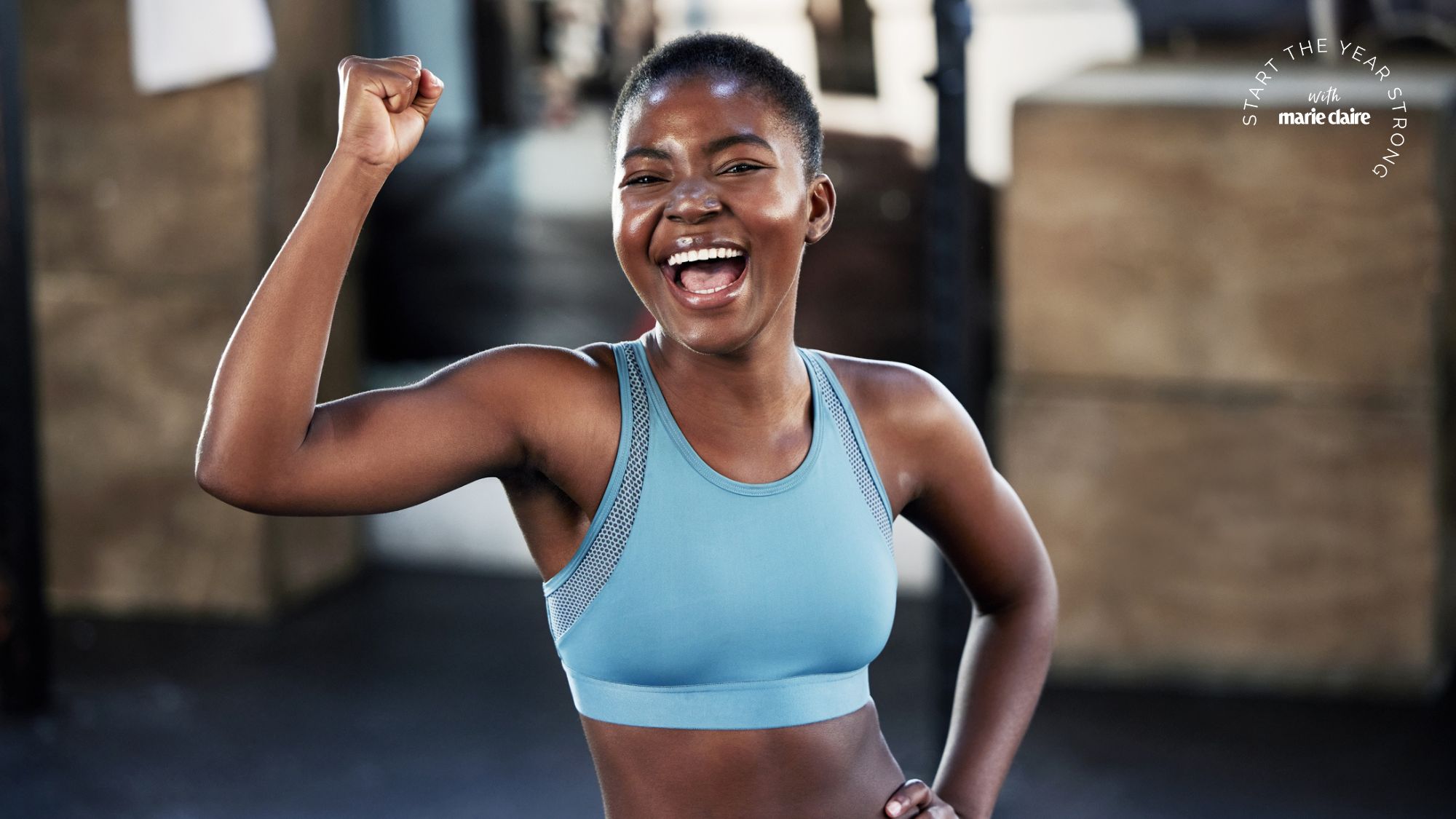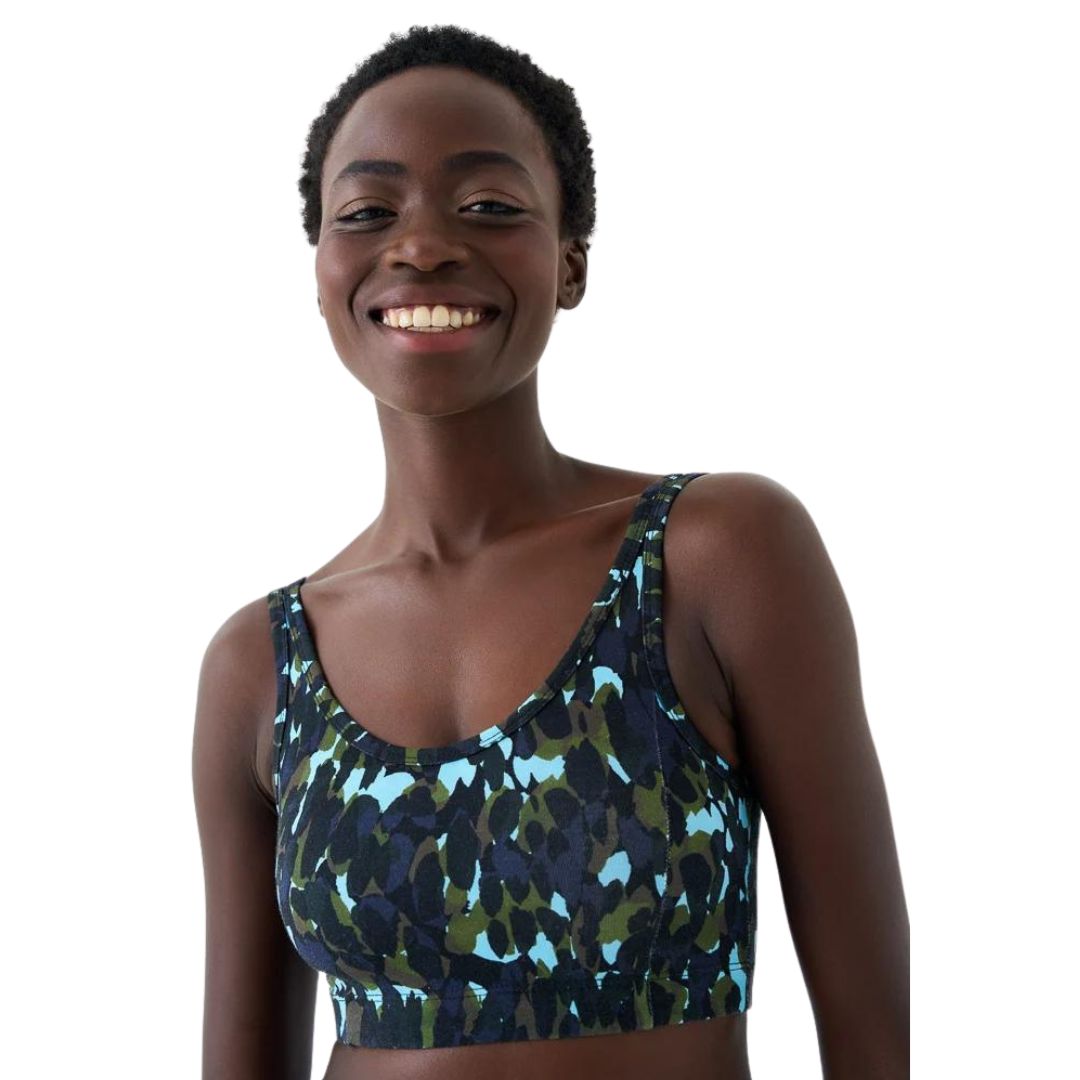It's official: you don't need a gym membership to get fit. 9 best home workout moves for boosting fitness, fast
A personal trainer weighs in on how to good have a session sans gym.


The phrase "home workouts" might make you recoil with memories of lockdown, but spoiler alert: training without access to a gym is about so much more than whatever your 2020 flashbacks are serving you. In fact, for many people, it's one of the best ways to get fit: just 16% of the population are members of a gym, according to a PureGym survey, meaning many taking advantage of home workout exercises to boost fitness from their living rooms.
"The beauty of home workouts is the flexibility it gives you to exercise within your own timeframe, in a format that excites you" explains Nancy Best, PT and founder of Ladies Who Crunch. "Sometimes the logistics and cost implications of joining a gym can be a barrier for consistency, whereas home training helps you manage your time more efficiently and save money, too."
That said, many of you worry that doing exercises from home isn't as effective as training in the gym or at a workout class. To that, we say: don't panic. We're here to share everything you need to know about making home workouts both effective and fun. As well as Best's expertise from years in the business, I'm a Health and Fitness Editor who spends her days writing, reading and interviewing the best brains in the business training almost every single day. I'm also a qualified fitness instructor, so I know a thing or two about making your living room sessions spicy. Simple home workouts never looked so, well - simple.
For more simple workout moves you can do from home, check out our guides to ab exercises, resistance band exercises, and body weight exercises.
Home workout exercises: your expert-approved guide
What is the best way to do home workout exercises?
If you're starting from scratch when it comes to home workouts, then know that the best format for home workout exercises depends on your goal. "If you’re looking to build muscle, for example, I’d recommend hypertrophy training (performing ten to twelve reps of each exercise with a weight that challenges you, and repeating three to four times)," shares Best.
That said, if you’re Googling, what is strength training and are keen to boost your muscle, she recommends prioritising lifting heavier weights for a smaller rep range (three to five sets of two to six reps). "This can be done at home with dumbbell exercises and kettlebell exercises," she adds.
Lastly, if you’re looking to try more restorative, low-impact strength training, she advises adding Pilates workouts into your training. "The best way to format this type of movement is to focus on time under tension, aka holding positions for time rather than reps," Best shares.
Celebrity news, beauty, fashion advice, and fascinating features, delivered straight to your inbox!
As you're trying out home workouts, you can give every style of movement a try until you find the one that sticks. But the one thread that runs through every style of training is that form is key: maintain a mind-to-muscle connection and get to grips with performing the key movement shapes that occur in every single workout comfortably. These include squats, hip hinges, upper-body "press" movements and upper-body "pull" movements as well as core activation. Don't worry - we'll run through these home exercises later.
What are the benefits of home workout exercises?
Aside from the key benefit being the fun and flexibility, Best says that, since the pandemic, access to good quality equipment has hugely improved. "The majority of my clients have a brilliant set up for an effective workout at home without the need for large machinery," she shares.
"The reality is that most people who visit gyms do not utilise the large range of equipment on offer, so as long as you have a selection of basics at home, you can achieve brilliant results," she says. She reckons this includes:
- A mix of free weights
- Resistance bands
- An exercise mat
- A bench or sturdy chair.
Studies, such as a 2016 paper from The Journal of Physical Therapy Science, found that home workouts lead to statistically significant improvements in pain, abdominal muscle endurance, flexibility and disability.
Similarly, research from Liverpool John Moore University found that a home workout programme was just as effective as a supervised workout for improving health markers which they put down to home workouts reducing barriers to exercise including time, cost, and access to equipment while increasing adherence in typically inactive people, giving them a more attainable exercise goal.
Should you follow your own workout or try a training plan?
If you've never performed home exercises before, it might be useful to check in with a professional. "I would always recommend following a programme from a qualified fitness professional, even if you’re training solo at home, to perfect your form and avoid getting injured, particularly if you’re a beginner. Once you’re really confident with the movements and you feel motivated to plan your own session, you can take total control of your programme," says Best.
And one of the benefits of that is that you can work towards your own personal goals - perhaps you know you have a weakness somewhere that needs extra attention or you want to focus more on cardio, power or strength. Plus, it creates a much more autonomous attitude to exercise that will see you through the rest of your life. "Sometimes we can be on autopilot in a class environment, blindly following instructions. But planning your own training is a brilliant way to become more intuitive in your approach - asking yourself questions like, what does my body need?’ Or how hard does this specific exercise feel?" asks Best.
9 best home workout exercises, according to a PT
The best home workout exercises will be a combination of compound exercises - those that use multiple muscles in your body - as well as isometric exercises that target one muscle at a time. "I'd also challenge your body across multiple planes of motion, such as forwards and backwards, side to side and twisting," says Best.
Ready to try exercises she suggests trying at home?
1. Goblet squat
What? A goblet squat involves holding a weight at your chest as you bend your knees to bring your hips towards the ground.
Why? Squats are a compound exercise that use your quads, glutes, hamstrings and abdominals, and holding a weight during them also recruits upper-body muscles such as your shoulders, chest and back. A goblet squat is the most home-workout friendly of them all as you only need one weight for resistance.
How long? Either work within the recommended rep ranges for hypertrophy and strength, choosing weights that make the final few reps feel like a struggle, or opt for 15-20+ slow and controlled reps that will challenge endurance.
2. Romanian Deadlift
What? A Romanian deadlift is a hip hinge. Unlike a squat- in which the knees bend - in a deadlift, the hips move backwards and forwards.
Why? This targets the glutes and the backs of the legs - muscles that typically "underfire" during our sessions, as we spend all day long sitting on them. Your glutes are also the powerhouse of your body, being the largest muscle we have, so making them strong improves all-round health.
How long? This is a good one to work in the hypertrophy range, so think about finding a weight you can lift for around 10 reps. But remember, working to failure is the most important part of an effective workout, so if your weight is light then increase the reps.
A post shared by KAYLA ITSINES (@kayla_itsines)
A photo posted by on
3. Back extension
What? This is one of the upper-body "pull" moves that is designed to work the muscles in the back upper body.
Why? A back extension requires no kit so it's easy for everyone at home to do - although if you do have light dumbbells or bands you can add on extra resistance. Building a strong back is important to reduce pain and improve posture, FYI.
How long? Because this is a bodyweight movement, high reps are needed to challenge your body enough to adapt and build strength. Aim for 15+.
4. Press up
What? This is an upper-body push movement - working the front of the upper body, including your chest and shoulders, as well as your abdominal muscles.
Why? Press-up strength translates into so many other parts of training and everyday lift like holding a strong plank and pushing a heavy pram.
How long? This bodyweight move is pretty challenging for most people, so work within your own range. Go until failure, whether that's one or 10.
A post shared by Lucy Haldon (@lucydavis_fit)
A photo posted by on
5. Push press
What? This move comprises a squat and an overhead press - pressing the weights overhead with your shoulders - put together in one fell swoop. You can use dumbbells, a long resistance band or a kettlebell.
Why? This move puts together lots of the strength you've built in your compound exercises into one explosive exercise, giving you a lot of bang for your buck. It's a great one to do if you're short on time and want to work lots of muscles.
How long? Try to aim for eight to 15, depending on your weights.
6. Glute bridge or hip thrust
What? Glute bridges and hip thrusts are the same movements - performed on your back with your feet flat on the floor, then tilting your pelvis backwards as you lift your hips off the ground towards the sky - but the latter raises your shoulders onto a bench, chair or surface for extra depth.
Why? As we mentioned before, your glutes are your powerhouse, and keeping them strong matters. This move isolates them to activate and strengthen the muscles.
How long? Try to do high reps - think 12+ - and go until failure.

7. Plank
What? You'll have likely tried this compound movement that involves maintaining a straight line from your head to your toes while keeping your weight off the floor using your hands or forearms.
Why? It works many, many muscles but particularly your core. And it also improves your stability as you'll be keeping still while your muscles shake.
How long? You can hold a plank for as long as you like, but a good goal to work towards is one minute in the position.
A post shared by Sierra Nielsen (@sierranielsen)
A photo posted by on
8. Deadbug
What? A deadbug is a weird name, but you'll see where it came from: this move involves lying on your back with your knees over your hips, legs bent at 90 degrees, and arms up, hands pointing towards the sky. Then you extend one leg and the opposite arm to the floor, using your abdominals to come back to centre.
Why? It teaches you stability and contralateral control and gives your abs a really good blast.
How long? Aim for reps - 10 on each side is good - or time, seeing how many you can do in one minute.
9. Bird dog
What? Think of a bird dog as the opposite of a dead bug: on all fours, you'll be extending one arm and the opposite leg out in parallel with your back, then lowering.
Why? It works your abdominals as you stabilise, as well as firing up the muscles in the back of your body.
How long? Again, aim for ten reps on each side, or work for time.
Shop MC UK's go-to workout kit now:

Specifically designed for working out, up your workout wardrobe with this soft-to-the-touch sports bra that will support you in all the right places no matter whether you are practising yoga, HIIT or hitting the gym. Plus, you know you're investing in a company doing good - BAM is climate-positive and a certified B Corp.

Topping our guide to the best yoga mats is this super popular 5mm-thick mat that comes with a whole load of cushioning, visual alignment cues and moisture absorption. From yoga to Pilates, this mat will work just as hard as you do.
What are the big 5 exercises at home?
As personal trainer Nancy Best points out, learning the ropes with the "big five" movements is key to an effective home workout.
These span squats, deadlifts, upper-body "press" movements (overhead press and bench press), and upper-body "pull" movements (pull up). Core activation is also important, but you'll be doing this during those movements, as most of them are full-body moves and therefore work muscles all over your body.
Current NHS guidelines recommend aiming for two strength sessions a week, as a minimum.

Chloe Gray is a freelance journalist who writes and talks about health, fitness, and wellbeing through a feminist lens. She was part of the launch team for Stylist magazine's fitness brand, Strong Women, and has written for i news, Women's Health, Red magazine, Good Housekeeping, Refinery29, and more. She's all about building mental and physical strength, eating delicious food that fuels you well, and making the fitness industry more accessible and enjoyable. She's also a qualified fitness trainer and research nerd, so you can be sure everything you read is backed by proper science.
![Goblet Squat [How To] - YouTube](https://img.youtube.com/vi/7-80HiXX1K8/maxresdefault.jpg)




